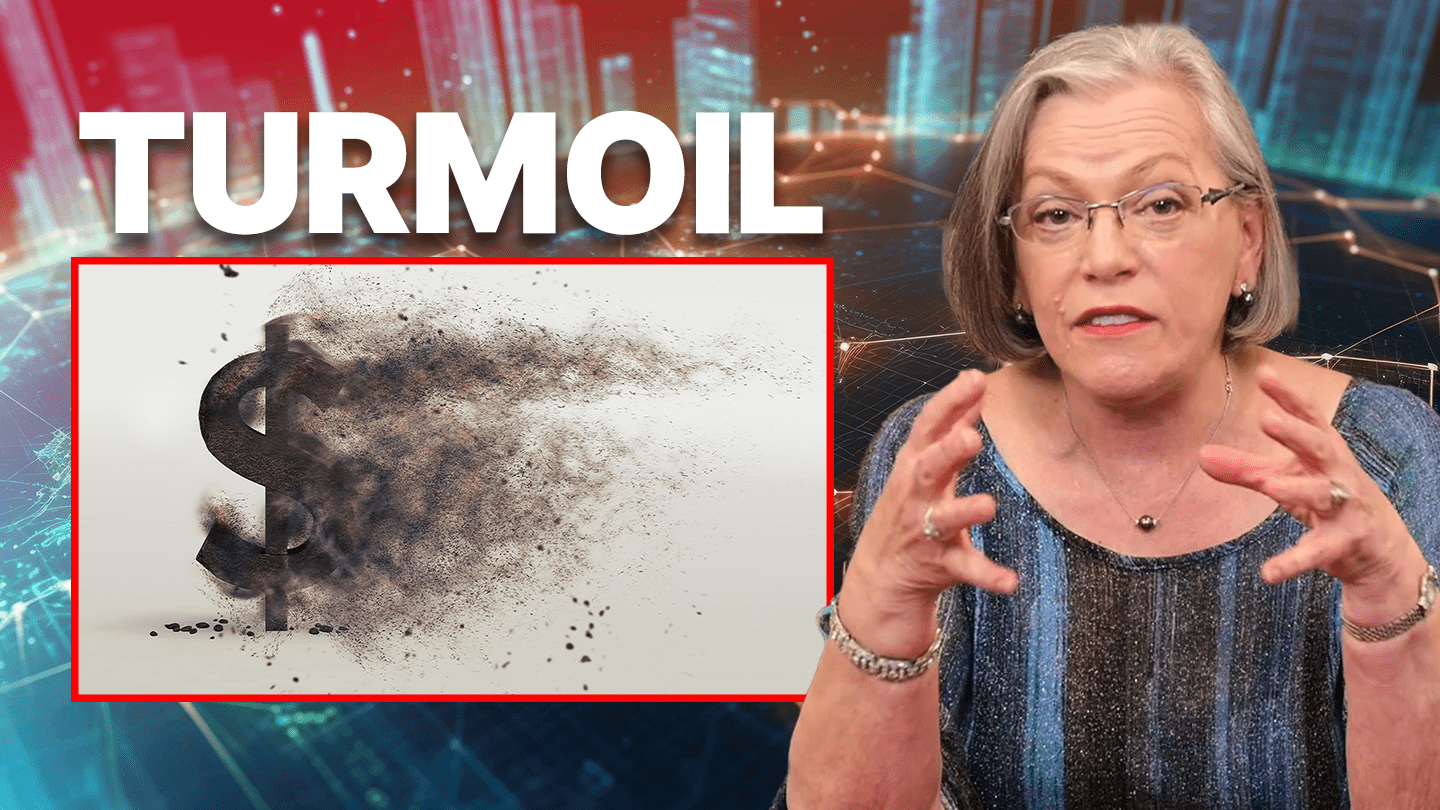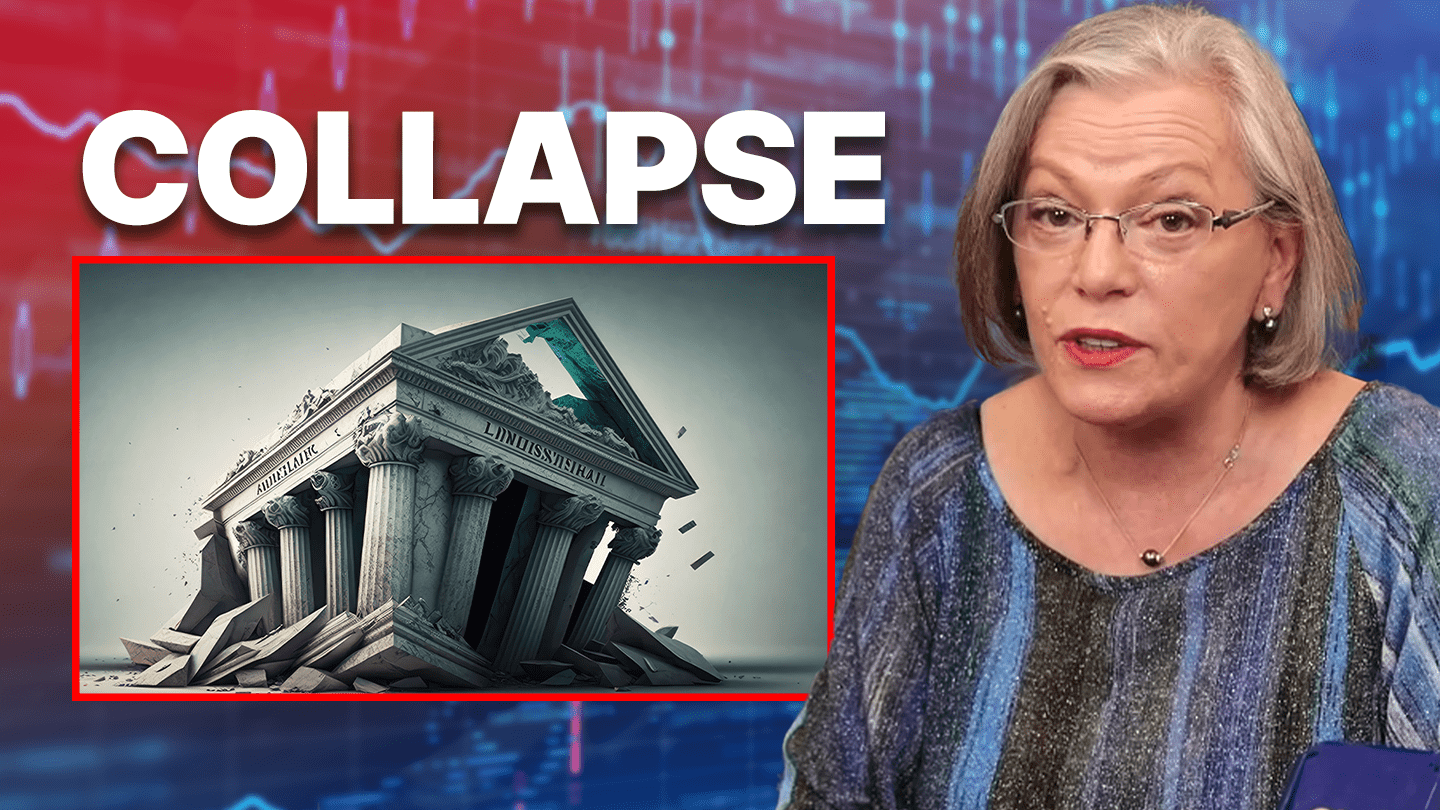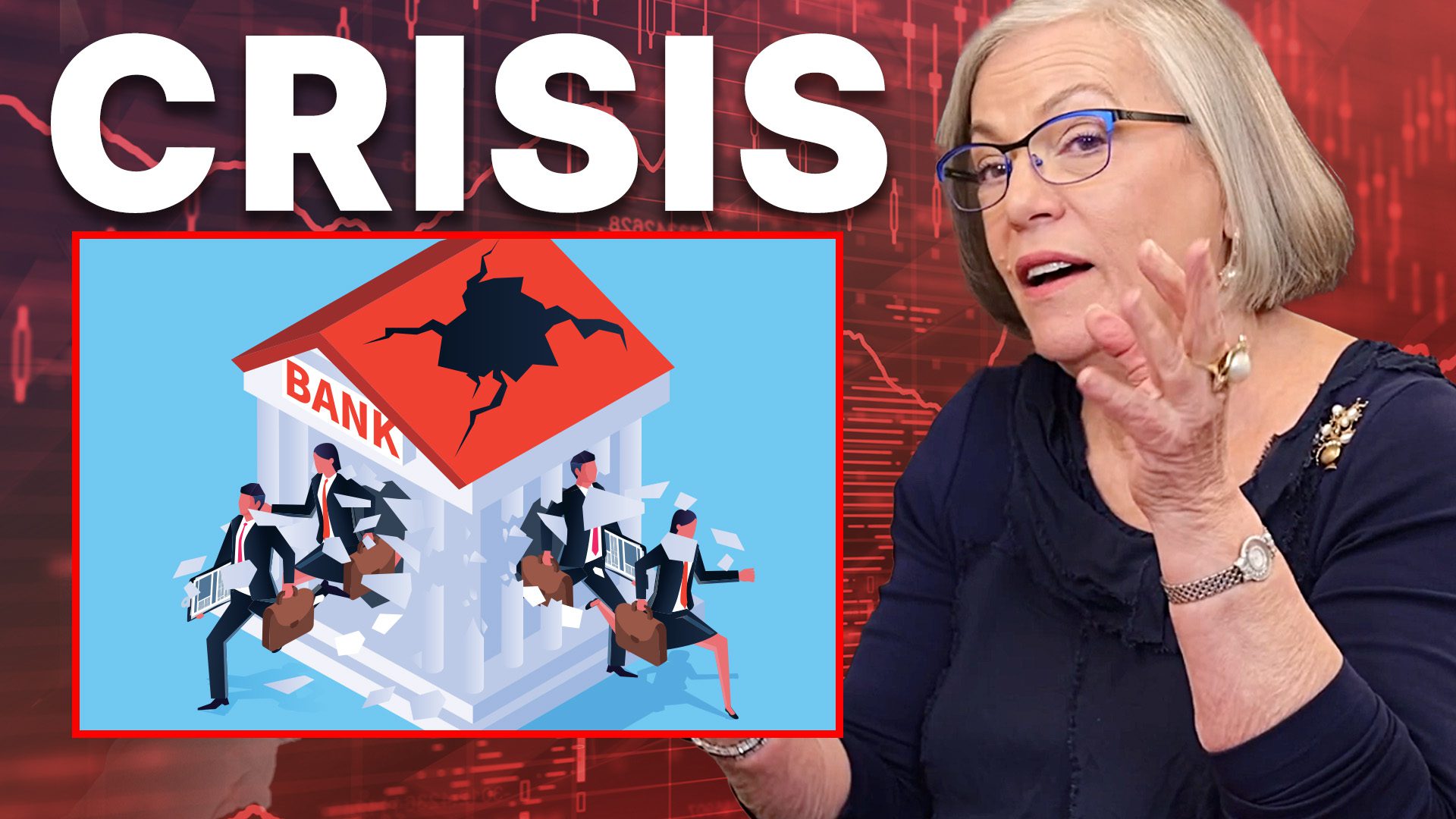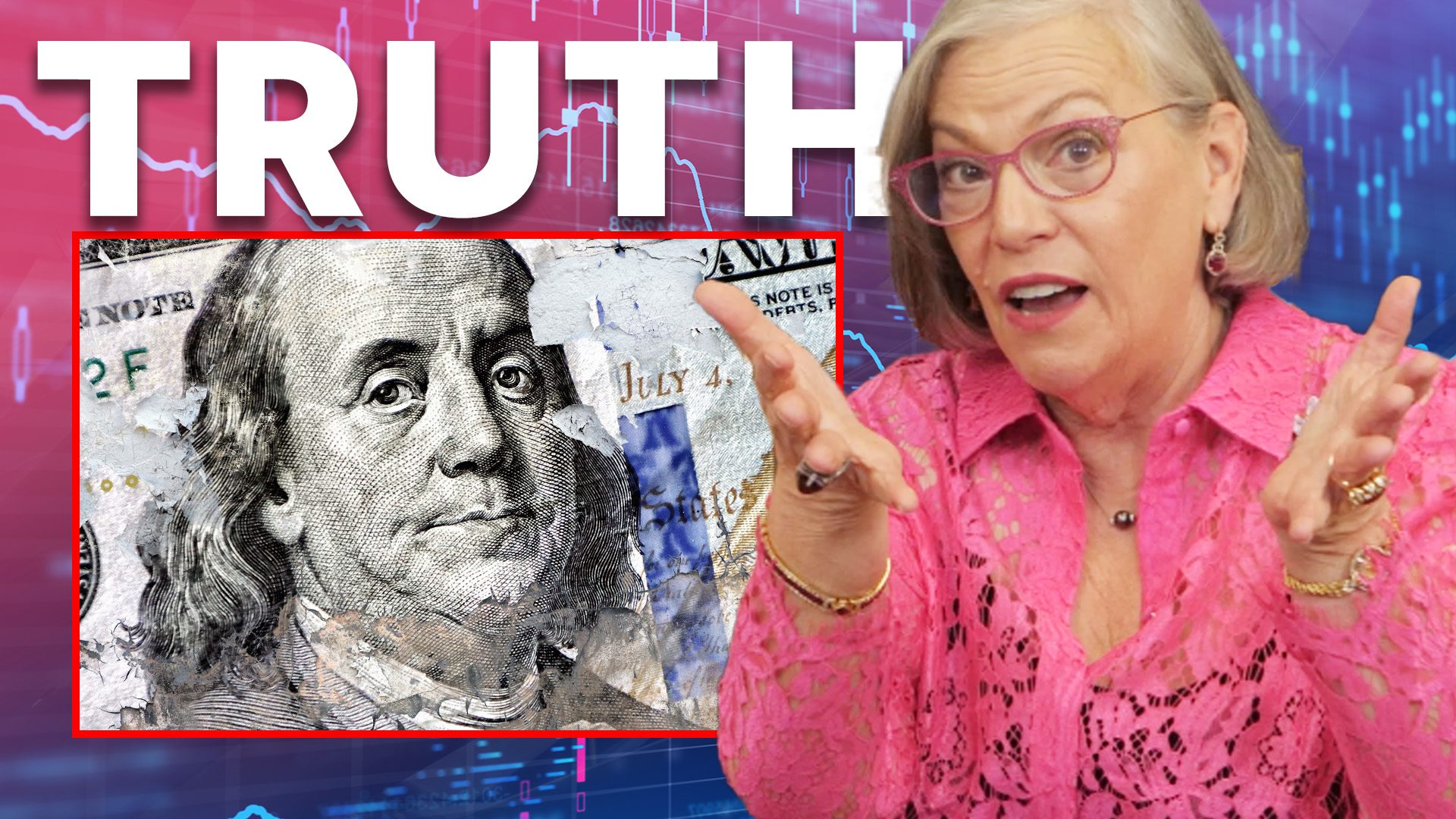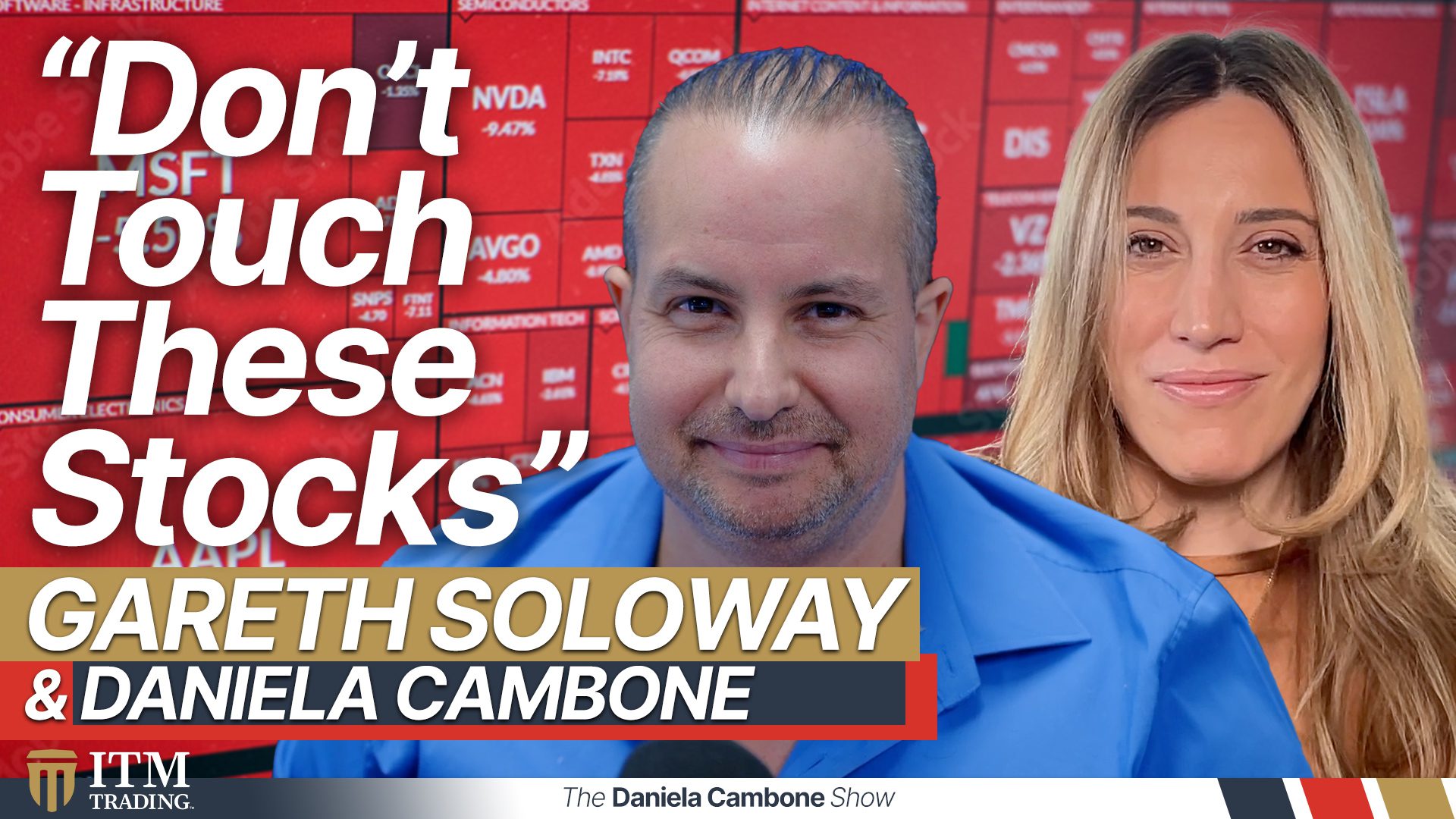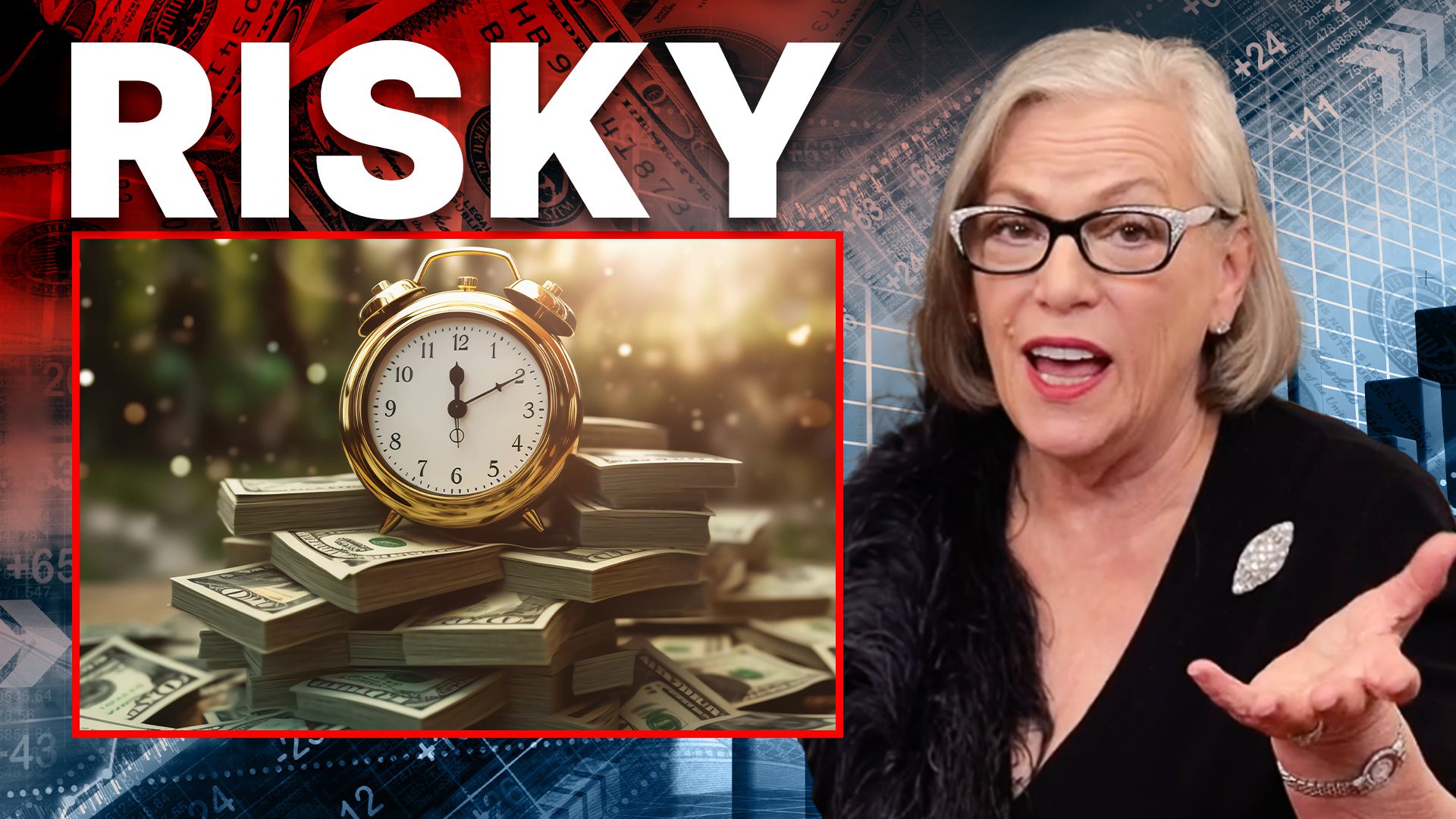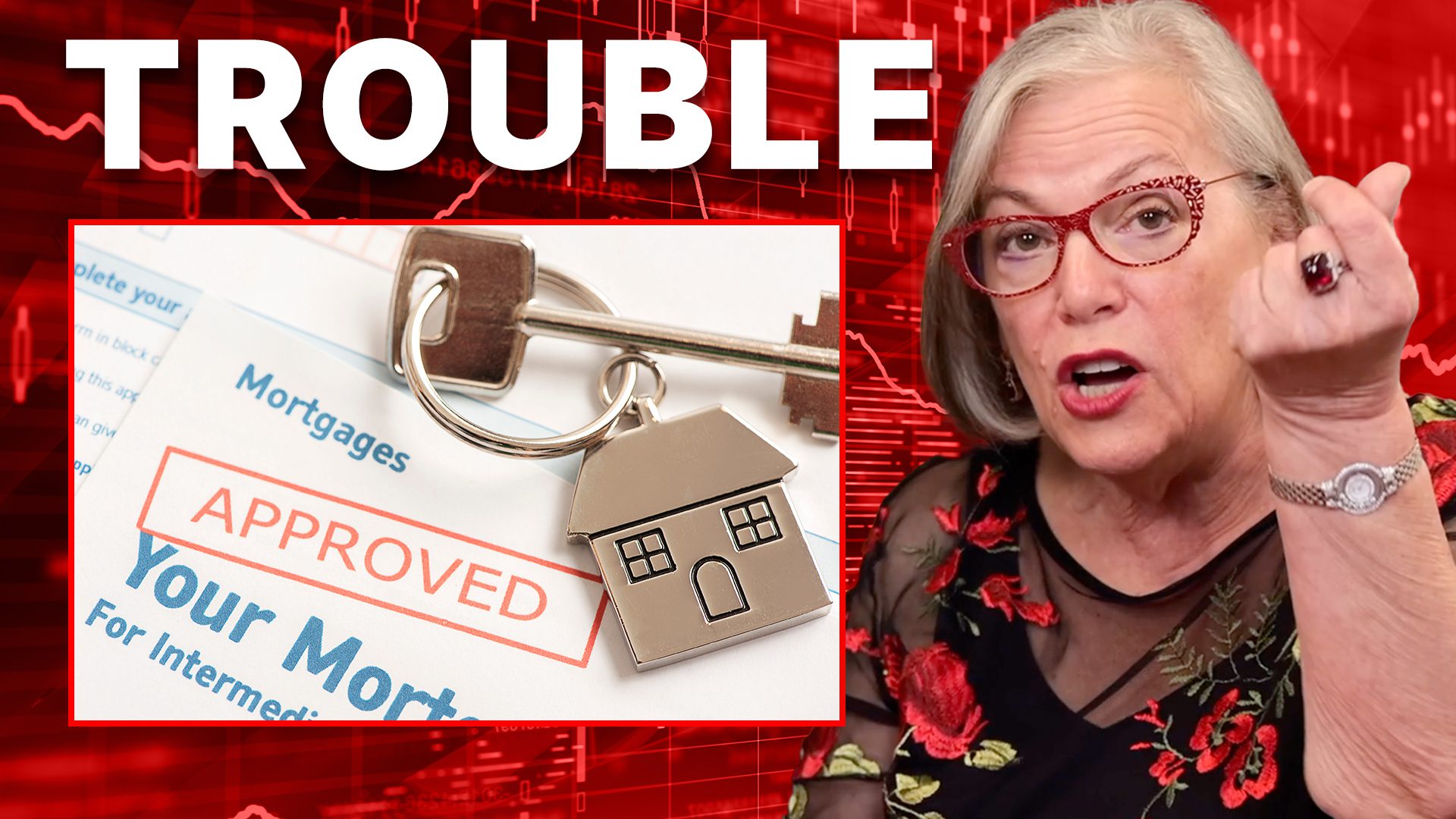Community Building in the Face of Monetary Change
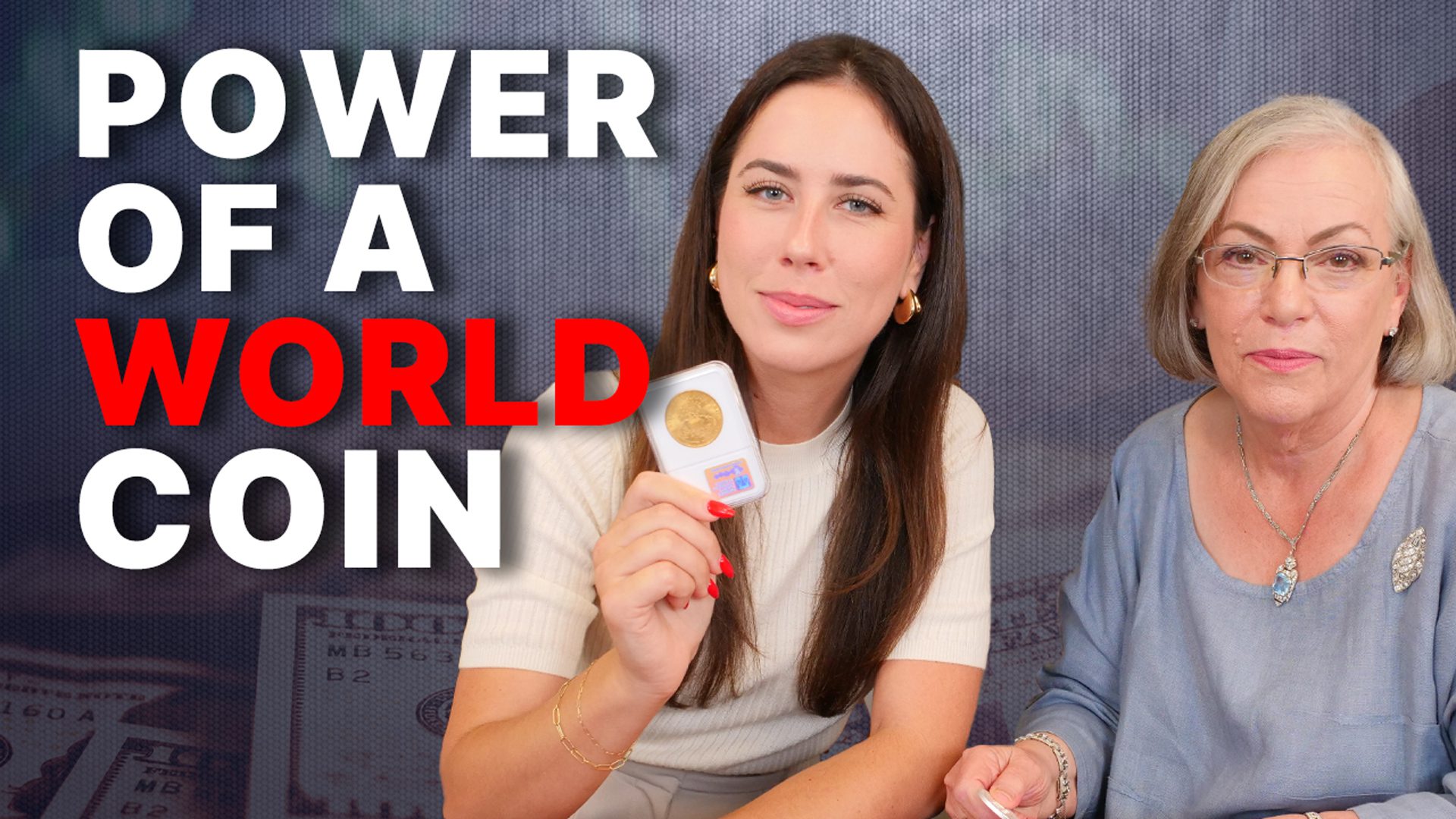
Eric sources questions from Lynette’s viewers and Lynette responds with organic and unrehearsed answers. If you have a question for Lynette and Eric, please either submit your question through YouTube, Facebook, Twitter, or email to questions@itmtrading.com. If you enjoyed the Q&A with Lynette Zang, please like, subscribe, and share in order to help Lynette fight the fiat money disease!
Have questions for the Q&A, email us at questions@itmtrading.com
Have questions about acquiring gold and silver? Call: 877-410-1414
0:49 Question 1:
How would Businesses make the transition towards accepting gold or silver on a day-to-day basis?
2:23 Question 2:
If Japan is printing more money than the US relative to its size, why is Japan not going into hyperinflation?
4:32 Question 3:
In your personal life, how have you noticed this past year or so your purchasing decreasing?
6:11 Question 4:
If they can create as much gold as they want in spot market and control the value in a reset, how will the real value of gold ever be realized?
12:53 Question 5:
Do you think that the hyperinflation has begun and people aren’t just aware of it yet, in your personal everyday experience?
16:42 Question 6:
You said the inflation rates are pausing or maybe coming down, but prices are staying high. Mm-Hmm. , can you explain that a little bit more? Because I’m sure I’m not the only one who still struggles with that and understanding how is that possible?
18:25 Question 7:
Lynette, how can I break down the risks of derivatives in simple terms for my family and friends when you discuss them?
20:52 Question 8:
Can you please talk about WORLD COIN and the WORLD APP aka digital ID is this something we should be watching?
TRANSCRIPT FROM VIDEO:
Speaker 1 (00:05):
<Silence>
Lynette Zang (00:22):
Have I got a treat for you on today’s Q&A? I have Taylor Kenney here, and I love her, as you guys know. And we’re gonna do the Q&A together today.
Taylor Kenney (00:35):
I am so.
Lynette Zang (00:35):
Hopefully more <laugh>, hopefully
Taylor Kenney (00:37):
More. I am so excited to be here. Thank you so much, Lynette.
Lynette Zang (00:40):
I’m very glad you’re here and you know that that’s true. So let’s just dive right into the questions.
Taylor Kenney (00:46):
Perfect. That sounds great. You
Lynette Zang (00:48):
Start. Okay.
Taylor Kenney (00:49):
Well, one question that I see all the time on videos is people are always asking, how would businesses make the transition towards accepting gold to silver on a day-to-day basis? What would that actually look like?
Lynette Zang (01:02):
Well that’s really interesting. That’s a great question. And what history, even recent history shows us, especially since everything is computerized. First of all, the movement and the price action of the gold and silver is easy enough for the stores to access. If there’s, so that when a product comes up there, then they know that conversion, they can set up the algorithm to convert automatically to how much gold and how much silver. And we’ve seen this in South America actually quite a bit. You know, additionally, if it’s something that needs to get weighed, like produce for example, again, there’s that conversion. They’ve got the weight, they know that the nominal dollar price, and then they can convert that easily to the weight of gold and silver.
Taylor Kenney (01:50):
So what you’re saying is it would actually be easier than probably a lot of people think it would be.
Lynette Zang (01:55):
Absolutely. Yeah. Yeah. Yeah. It’s very easy. Yeah.
Taylor Kenney (01:57):
Yeah. Terrific.
Lynette Zang (01:59):
Yeah. And in Venezuela actually there are, they will have the price in the bolivar ’cause they’re still legally have to accept the Bolivar and the price and gold right next to each other. Mm-Hmm. <Affirmative>. So you could even see it before you get to the counter. Of course, in hyperinflation, everything’s gotta be tied to the inflation, but yeah, it’s, it’s really an easy transition. Yeah,
Taylor Kenney (02:23):
Absolutely. Perfect. Well, another question we have is about Japan. So Japan, they’re printing more money than the United States relative to its size. Mm-Hmm. <affirmative>, if that’s the case, why is Japan not going into hyperinflation?
Lynette Zang (02:39):
Because they’re having to deal, you know, you’ve got deflation and as one side of the coin and inflation as the other side of the coin. Mm-Hmm. <affirmative>. And what Japan has actually been dealing with since the early nineties is a major depression or deflationary problem. And so the more money that they print, you know, here’s, here’s the fallacy. I don’t know why they call that money printing stimulus. Has it really been stimulating the economy as a whole? No, it’s been stimulating select groups. Okay. So the reason why we aren’t seeing Japan in a hyperinflationary stage yet, and remember who puts out those official numbers. So the average Japanese person is dealing with a lot more inflation than we see, because we just see the, the official numbers. And those are juggled a little bit, but the reason that they’re not really experiencing that is because the deflation is so much greater than the level of inflation that they’re pushing into the system. That will change. I believe that’s already changing now though.
Taylor Kenney (03:57):
That’s what I was going to say. So you’re saying that number one, it could be even worse than we think it is currently today. And number two, it’s going to continue in that direction.
Lynette Zang (04:06):
Oh, absolutely. And I would bet anything that it’s worse than what we could see because even when we look at the US numbers on things, is that accurate or is that, you know, they don’t change behavior, they just change the way they account for that behavior and hide an awful lot from us. Whether you’re in the US or you’re in Japan or you’re in China, I don’t know. Take your pick. Doesn’t really matter.
Taylor Kenney (04:32):
That makes sense.
Lynette Zang (04:32):
Doesn’t it? Yeah. But I wanna know really, in your personal life, how have you noticed this past year? So your purchasing power is decreasing. How have you personally noticed that?
Taylor Kenney (04:46):
Oh everywhere. I mean, I know that’s a simple answer, but I go to the grocery store, of course, we all know food prices have been insane. And not just grocery shopping, try going out to eat. It’s ridiculous. Yes. It’s, and it’s not even just your entree. It might be ordering a soda or an appetizer. Those prices are through the roof. What used to be maybe normal is now considered a luxury. Mm-Hmm. <Affirmative>, not only that, I would say household goods, staples, toilet paper, paper towel cleaning products, you name it, those bills have gone up. Another one for me too is recreation or entertainment. Mm-Hmm. <Affirmative>, I went bowling the other day and it was crazy. I think it was $50 for an hour, then $6 for rental shoes, $10 for a beer after tax and tip.
Taylor Kenney (05:31):
It’s no longer just an easy casual night out. It becomes a massive expense.
Lynette Zang (05:37):
Well, if your income doesn’t keep pace with that, then how do you deal with that?
Taylor Kenney (05:41):
That’s the question. And I can only imagine how terrible it would be too, if you have a family of four or five, six. If I’m one person, imagine multiple people trying to enjoy something they did even a year ago.
Lynette Zang (05:52):
Yeah. Yeah. It’s tough. Yeah. But they keep telling us the consumers in such good shape. Yeah.
Taylor Kenney (06:00):
<Laugh>, I think we’re all living it
Lynette Zang (06:02):
Hopium, right? They’re telling us hopium.
Taylor Kenney (06:06):
We know, we know. So <laugh>. Yeah. Well I’ve got another question for you too. Okay. I’m curious if they can create as much gold as they want in the spot market mm-hmm. <Affirmative> and they can control the value in a reset, how would the real value of gold ever be realized?
Lynette Zang (06:24):
Oh, that’s a great question. Anybody that is trusting the spot market to tell ’em how much gold is really worth is out of their minds, they’re living in fantasy land because that’s really just used to control the visible price. But what we are already seeing in the physical market are that premiums have gone up a lot. And especially in the collectible market, that’s where we’re seeing in the ultra rarities where the one percenters live making new all time highs. So here’s the thing, when the public loses confidence in the currency, that’s the problem that high inflation creates. People start to lose trust, right? Right. So when the public loses confidence in the currency and in the system, in the, in those that are in power, well that’s when we’re in a hyperinflationary event, they have to get that confidence back, right? That’s when they do the overnight revaluations understanding what the true fundamental value of an ounce of gold is. And it’s a little nuanced, but anybody can determine somewhere near that’s where that’s likely to go, right? What we don’t know is what the coverage ratio is. So let me explain how, how anybody can get that really simply. And you’re not gonna get to the penny, but you’re only, you’re gonna get reasonably close, right? Because the, you’ve got your good money, right? And there’s a finite amount of gold in any age, in any form, and it’s recoverable. So it’s all monetary at its base. Plus the Department of the Interior, if you wanna get more specific every year lets you know how much more gold is yet in the ground. So in ground gold right now, the fiat money, the government based money is based on debt. So if you wanna make your life easy, you can make it complicated. But if you wanna make your life easy, just go to the world debt clock and pull that number. It’s much higher actually than what they’re showing, but it’s also a lot more work to ferret it out. And I’m not really sure that it’s, it’s worth that extra time. Okay? Okay. But the amount of gold that exists is real easy and the debt clock is real easy. So you just divide the debt, buy all the gold that there is. And you have to understand too that when you’re looking for fundamental value, you wanna know the single most important function of this asset or this instrument. So for gold, for me, the single most performs a lot of things. But the single most important function is to hold its value over time. Okay? Mm-Hmm. <Affirmative>. And that, and, and then when you look back on history, that’s how I know how to get that, because that’s what I look at, right? So you divide all the debt by all the gold, and that gives you a number in nominal terms in terms of fiat, which I know Eric will say, you know, 12,000 or so. The last time I checked it, my number was a little bit higher. ’cause He might be doing something a little more complicated than me. Okay? I’m not gonna get you to the penny, but I’ll get you reasonably close. And that’s how, you know, on any instrument, whether or not it’s undervalued, fairly valued or overvalued. Therefore, do you wanna buy it? Do you wanna hold it? Do you wanna liquidate it with fiat? I know you asked me about gold, but with fiat money products, the real trend, they’re, they’re getting you to look at the stock market going up mm-hmm. <Affirmative>, because then you feel like, okay, and maybe you even feel rich. Right? But the reality is, it’s all about purchasing power. I don’t care how many digits you have, I care about what you can convert it into. And a hundred percent of the time, every single current fiat currency, government based currency has gone to a big fat zero. That’s the real trend. And a trillion times zero is still zero
Taylor Kenney (10:50):
Versus gold.
Lynette Zang (10:51):
Correct. Which holds its purchasing power value. I mean, that’s been proven for 6,000 years, right? How much more proof do you need? And it also then puts you in an opportunity to frankly take advantage of this whole transition. ’cause There’s always opportunity in change.
Taylor Kenney (11:14):
So based on what you are seeing right now, then in your own research you would say that gold is undervalued.
Lynette Zang (11:21):
Severely undervalued. I assumed. But really, because a rising gold price is an indication of a failing fiat currency. Mm-Hmm. <Affirmative> and more eyes that get on it, the more people that want to move into it. Now, if you’re gonna move into it Wall Street and the governments and the central bank’s preference through ETFs, which is not real gold, it’s simply designed to mimic the spot market movement. Right. Which doesn’t tell you what the fundamental value is, but all you own is share. It’s in a trust in a diminishing asset because they sell off the holdings, the underlying holdings on a daily basis to pay their fees. And you can see all of that in their 10k’s. I mean, that, that’s not really new news, but people don’t look at it. Mm-Hmm. Right? So no, you gotta have the physical, and in China, actually, the premiums just hit an all time high. And we’re just talking about monetary gold in there an all time high since they began recording it. Wow. What does that tell you? <Laugh> tells you a lot. And that’s happening in the US in the ultra rarities as well, all time high.
Lynette Zang (12:38):
So I wanted to ask now, do you think we’ve started pause real
Speaker 4 (12:42):
Quick, just a little fix on your hair? Oh yeah. On this side?
Lynette Zang (12:46):
This? Yeah. Yeah.
Speaker 4 (12:47):
Perfect. Perfect. Thank you so much. Perfect. <Laugh>.
Lynette Zang (12:53):
Okay. So, so let me ask you a question. Sure. Do you think that the hyperinflation has begun and people aren’t just aware of it yet, in your personal everyday experience?
Taylor Kenney (13:08):
Yes. I, I absolutely do. And I think that people are starting to be aware. We’ve seen a lot of people removing their money from banks, which is an early sign that people are becoming aware. But I think that it’s, it’s really just beginning. So we don’t know where it’s going to go. I mean, I would love to hear your thoughts on this. Well, I would actually agree with you because, and I’ve actually been saying that for a little while now. Once the inflation started to kick in that I felt that this was the beginning of the hyperinflation. Now what’s interesting, and I mean we are living through history, we are absolutely living through history. What I think is interesting is you, for a while there, you were watching all of these headlines on a global basis. Oh, they’ve got control of inflation. Inflation is coming down. Of course they remove the volatile food and energy. ’cause you don’t need to eat and you don’t need to put gas in your car or heat your homes or anything. But the reality is, is that it’s, it’s, it’s proven stickier than they thought. And it’s rearing its head again. Mm-Hmm. <affirmative>. And that puts us in a very fragile condition because the only tool that they have to fight the inflation with is deflation. That’s why they have to raise the rates. Right. So that forces them to raise the rates higher or keep them higher for longer, which is what Fed Chair Powell, and a lot of ’em are saying, some of the other countries that have started to bring the rates back down to stimulate the economy, getting people to borrow more money, they’re finding that the inflation is coming back again too. Mm-Hmm. <Affirmative>. So they’re basically, pardon me, damned if they do, damned if they don’t, it doesn’t matter what they do in this point. And all of these unique things that they say, wow, we haven’t seen that before. We haven’t seen that since 2007. What was happening in 2007, the great financial crisis. Mm-Hmm. <Affirmative> was kicking into gear. It wasn’t visible to the public yet, but it doesn’t mean it wasn’t happening. Right. So we are still in the early stage of it, which is why I think that anybody that has variable rate debt needs to get rid of it now as quickly as possible. Because if you hold that into hyperinflation, you’re never getting rid of it. But so now we’ve had a little bit of a, at least a visible pullback in the rate of inflation, not in the prices, but in the rate of inflation. But that’s rearing its ugly head with what’s happening in the oil markets. And, you know, that whole group of oil producing nations has said that they would like to see not just a hundred dollars oil, but they actually wanna see $110 to $120 oil. And we’re at somewhere around $95 ish at the moment. So how does that impact the gas prices and your ability to go out and, and have an evening or, you know, spend on, you know, we’ve got Christmas coming up, the holidays coming up, and that’s the big question mm-hmm. <Affirmative> is this going to impact how people shop in the holidays? Uh-oh, we’re a consumer driven economy. We’re in real big trouble.
Taylor Kenney (16:37):
I imagine so I, I’m curious too, as someone who is always learning and so curious, you mentioned something that stuck out to me. You said the inflation rates are pausing or maybe coming down, but prices are staying high. Mm-Hmm. <affirmative>, can you explain that a little bit more? Because I’m sure I’m not the only one who still struggles with that and understanding how is that possible?
Lynette Zang (16:58):
Well, you know, part of the goal of governments and central bankers is to create that cognizant dissonance. Right? Right. And when you’re confused, when people are confused about something, they become like deer in a headlight. So I was talking about your personal, you know, asking you about your personal experience and going bowling and going shopping and all of that. Have you seen the prices go down?
Taylor Kenney (17:26):
They’re only continuing to go up.
Lynette Zang (17:29):
So it’s the rate of inflation that’s slowing, but they don’t want you to understand it because their job is to keep you in the system, keep you with the fiat money, keep you away from what would actually protect you, the gold and the silver because it becomes invisible to them. Mm-Hmm. <Affirmative>. But you have to remember, the Bank for International Settlements, which is the central banker, central bank has said gold is the only financial asset that runs no counterparty risk. They didn’t say two, one of the two or one of the three. They say it is the only one. You hold it, you own it. So that’s why I have that motto, if you don’t hold it, you don’t own it, period. It is really that simple. Should we take some questions?
Taylor Kenney (18:24):
Absolutely. It looks like we have a question here from Michael45. He asked Lynette, how can I break down the risks of derivatives in simple terms for my family and friends when you discuss them?
Lynette Zang (18:36):
That is really, really hard. You know, I think a really good example of derivatives that might be easy to explain is when I found in the bank for international settlements that for every one ounce of physical gold, and so the bank for international settlements tracks the derivatives, right? it’s just a big leverage bet. And here’s the leverage for every one ounce of physical gold that exists, the markets Wall Street has created 65,000 ounces of gold. Now that’s leverage. Okay? And that’s the derivatives. And they have derivatives against interest rates which have be exploding. They have to be with that rapid rise of interest rates. But it’s the people that create those derivatives also rule over how they classify a default and they keep that hidden. So it’s definitely like an iceberg. All we see is this teeny tiny tip and the derivatives are sitting underneath the market when I counted them the last time. And so I’m telling you right now, they’re a lot higher than that. It was 1.45 quadrillion quadrillion and that was just the notional value, which means, and every single entity, FDIC, the Federal Reserve, the IMF, the BIS take your pick, it doesn’t matter. Every single entity admits in writing that that nominal value does not reflect the true value that’s at risk. So it’s like everything is built in derivative terms, everything is built on a house of cards and things have to go perfectly to keep that house of cards standing. Will you think things are going perfectly now
Taylor Kenney (20:39):
<Laugh>
Lynette Zang (20:40):
So, I mean, it’s really hard. Derivatives are really complex and they’re really hard. But simply put, it’s a big leverage bet. And then if you give them that example, and I’m sorry it wasn’t 65,000, it was 62,000. One physical ounce of gold, 62,000 ounces of derivative gold that does not nor ever will exist. ’cause There’s a finite amount of gold. And I hope Michael, that answered your question.
Taylor Kenney (21:10):
Absolutely. we have another one here from UndoneGunn. It says, can you please talk about world coin and the World app, a.k.a digital ID? Is this something we should be watching?
Lynette Zang (21:24):
Well, you know, I did a piece on the world coin, but you definitely wanna be staying tuned for next week because the IMF is bringing out the SDR as a world coin. And I think that it’s most likely to be the IMF because the SDR has been around since 69 and it’s a basket of currencies that’s easy enough to include every currency. So I’m gonna be doing a piece on that. Should you be watching it? Uhhuh <affirmative> <laugh>? You should, but I really think it needs to come from a credible source. I did a piece on the world coin, but that was from a private entity. That’s, that’s not gonna have enough clout and enough backing. But the IMF that’s made up of every treasury secretary and every central bank chief in 190 countries around the world, yeah. That that’s got enough clout, that’s got enough backing and they keep control. They’re not gonna give control of the money supply away easily. But do you know how that you can fight that?
Taylor Kenney (22:32):
Tell us.
Lynette Zang (22:33):
Two ways. Okay. Okay. Number one, you vote with your wallet. Right? So if you position into gold and silver, that’s your vote. If you keep your wealth in fiat money, that’s also your vote. Mm-Hmm. <Affirmative>, right? This’ll protect you. That won’t. But the other way, and I’m getting chills again, every time I talk about this Taylor, I get chills. I did make mention that I just recently came back from events in Australia and New Zealand mm-hmm. <Affirmative> and in Australia at the, the second and third event, I threw away my normal playbook. And I just talked about community. And that’s how we can battle it. We have to create a global community that comes together to support each other. Because there are way more of us. Remember, we’re the 99% and we don’t need to get 99% of the people to understand what we understand. We just need a very vocal, smaller percent. And I made a commitment, not that, not this Tuesday, but I, we will be coming out with a five minute video, five minutes, and I’m gonna try and figure out how to help those people that are having trouble making that paradigm shift. How to help them make that paradigm shift. So bear with me and I need to get response from it too. How when you showed them you can get anybody to sit for five minutes, right? They can get it here, they have to get it here and they have to get it here at the deepness level so that they have the ability to move forward, overcome that cognizant dissonance. Right? Because that’s what keeps people stuck. We, we’ve got this lie that we’ve been told since the day we were born and we’re asking people to see the truth. And it’s hard. How many times can you be lied to? And you do not know the truth.
Taylor Kenney (24:39):
I just got chills too. I did, I really did.
Lynette Zang (24:41):
Right, right. I mean, I’m telling you since I started talking about Community, I know that’s what we need to do. Mm-Hmm. <affirmative>, there, there is not one doubt in my mind. And we have a global following. I mean, how wonderful is this? Absolutely. So we can do this. I’m just getting waves of chills and I was talking to Morgan, my farm manager this morning, but what attracted me, aside from her skills in many other areas, what really attracted me to her is that she’s been learning how to build community since 2013. So she’s gonna be working with us on this and we’re, we actually have a focus group in Thrivers, in the thrivers, it’s thriverscommunity.com where we have a person in there that is homesteading now and doing everything themselves. And it’s just exhausting. And they don’t know how to build the community around them so that they don’t have to do everything themselves. And we’re gonna be figuring that out. So if you haven’t gone to Thrivers, do so and join the community. And we have that conversation every Tuesday at about one 1:30 PM MST, isn’t it? About 1:30, quarter of two-ish, something like that. Come and help us figure this out. But I am a hundred bazillion percent committed to figuring this out. ’cause That’s what we have to do to battle the CBDCs and this one world currency and this new world order and come out on the other side of this with a more fair system so that you’re not working for the 1%. I mean, I feel really strongly about it. <Laugh>,
Taylor Kenney (26:32):
I think that that sentiment is shared. I know I share and others do too. And not only to make this community stronger, but to give people tools. Exactly. To help expand the community too. Expand the message. Yeah,
Lynette Zang (26:43):
Exactly. Mm-Hmm. <affirmative>. Exactly. Mm-hmm. <Affirmative> one person can’t do it all. But we all bring gifts, right? We all have talents. We all have things that we are thinking about. So join us in building this community and making and shaping it in a way that benefits everybody, that supports everybody. ’cause That’s what a good community does. It supports everybody in the community. And, you know, maybe somebody doesn’t have the, the means to buy a lot of gold and silver, but hey, they’re a great farmer. They’re an electrician. They can build stuff. They can cook. I always think you should have a good massage therapist <laugh> in every community, because after you’re out there working really hard, you need a little massage. You know? But everybody has a talent, right? So come help us. I mean, that’s really what we have to do here, that that’s really what we have to do. But if you haven’t also started your gold and silver strategy, click that Calendly link below and get that set up. And you wanna put your goals first, because it really has to be that, that what you’re trying to accomplish, everything you do supports that. Right? So there’s that Calendly link. I mean, our, our strategy specialists are brilliant. They’re, we’re all executing the same strategy, just kind of tweak for yours. And we really are all in this together. And, and I, for one, you’ve been doing such a fabulous job. Your videos are great. I mean, it’s good to break it down to a 101. ’cause frankly, I’ve been doing this my whole life and I don’t, so what seems like a, like a no-brainer to me. If you’re new to it, it’s not gonna be a no-brainer to you. But I can’t see that, right? I mean, I try, I do my best. But you have much clearer eyes in that. So, you know, you are a very welcome member of this team and of this community. Honestly.
Taylor Kenney (28:47):
I so appreciate that, Lynette. I love you too. I really do. <Laugh> I know. I’m so
Lynette Zang (28:53):
I feel the same way, way.
Taylor Kenney (28:54):
So I, I, I just, I am so happy to be part of the team and like you said, part of the community, it means so much to me to be helping others. Absolutely. That’s really what it’s all about. Absolutely. So isn’t it? Yeah. Yeah.
Lynette Zang (29:05):
It’s, it’s this community and, and everybody that’s watching this, you are invited to come and join us and help us do this. Yes. Because, you know, we’re all learning, you know, Morgan is gonna bring a wealth of, of her experience to the table, but we all have to pitch in with our gifts. And nobody, no one person can know everything. And that’s why it’s so important to get everybody involved. And, and I will figure out how in five minutes, which I know I’m saying this and I’m making this commitment, it scares the Hades out of me, to be honest with you. You could
Taylor Kenney (29:44):
Do it. You can do
Lynette Zang (29:45):
I know. And, and you know, the other thing is, is when we put that out to people, when you view it, when others view it, I don’t really wanna hear, oh, that was great, Lynette. I wanna hear how it could be better. Mm-Hmm. Right? So this isn’t really a one and done. And if we do it and you share it and you don’t get the results that you want, I need you to, you know, I need everybody to, to see how can we do this better, right? How can we do this better as a stockbroker, Shearson gave me something that I used to this day, and I think I shared this with you before. When things don’t work the way you want them to work, instead of kicking yourself and going, oh, they didn’t get it. You go, well, what did I do right to get as far as I got? And what can I do right her to get even further? So that’s what I need. I need that feedback together. We can, we can protect our ourselves, our family, our future families. We can do this. I know we can. And I’m getting chills again. We can absolutely a hundred percent do this. And I know we ran <laugh> really long, but we’ve got some great recent videos that are out, you know, and especially the one that I just did last night, ignore this at your own risk because there’s something that’s happening in the treasury bond market that is really unprecedented. Mm-Hmm. And it is the foundation of the global system imploding. And you better not, please don’t ignore this. But we’ve got, well, what about the things that you’ve done recently?
Taylor Kenney (31:28):
Well, Michael, you’ll be happy to hear I’m doing a 101 on derivatives this weekend, actually. Perfect. So even breaking it down from a bigger picture to, to what, what really are derivatives and why they matter to you.
Lynette Zang (31:40):
And you do it much faster than I do. <Laugh>, <laugh>. I which is really good. <Laugh>. It’s good. It’s good. You know, we have to have different perceptions and different perspectives. And guess what? We don’t even have to always agree. And that’s okay. I can respect your research. Yeah. Right. And your opinion. And that’s what I think everybody should do, is they do their own due diligence. And you come up with your opinion, not based on hopium, but based on facts. And then we can share that. And maybe I see something you don’t, maybe you see something I don’t. And together we can make that understanding. So much more powerful.
Taylor Kenney (32:23):
Absolutely. We’re all learning and growing together.
Lynette Zang (32:25):
Exactly. So if you haven’t already, make sure you subscribe. Leave us a comment, give us a thumbs up and share, share, share. And remember, financial shields are made up of physical gold, physical silver in your possession. And until next we meet. Be safe out there. Bye-Bye.
